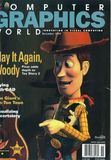
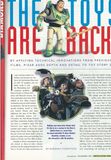

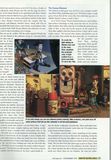
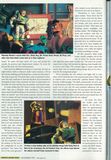
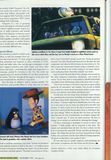
By Applying Technical Innovations From Previous Films, Pixar Adds Depth And Detail To Toy Story 2
It may not have made it to infinity and beyond, but Toy Story, the first feature film created with 3D graphics, has certainly made it into the filmmaking and computer graphics history books. A critical, technical, and financial success, Toy Story generated more than $300 million in box office revenue worldwide and over $100 million in rental fees. The movie earned a special Academy Award in 1996, and turned Woody and Buzz Lightyear, the stars of the film, into household names. On November 24, Walt Disney Pictures and Pixar Animation Studios will release Toy Story 2, a sequel to their 1995 film. Directed once again by Pixar’s John Lasseter and created at Pixar, the sequel brings back Woody, Buzz Lightyear, and the rest of the toys from Andy’s room as well as the entire voice cast including Tom Hanks as Woody and Tim Allen as Buzz.
Sequels to Disney animations are usually created as direct-to-video releases, and that was the original intention for Toy Story 2, In fact, the video production was well underway when the studios decided to switch to film. “The basic storyline about Woody being stolen by a toy collector stayed the same,” says Ash Brannon, co-director with Lee Unkrich, “but it had to be restructured from an hour-long video into an 80-minute film.” The change gave the story- tellers more elbow room for plot twists and turns, he says, but it also meant more work for the film crew, who had to reframe everything to accommodate film’s wider aspect ratio and higher resolution, as well as cope with the additional 20 minutes and an increase in complexity.
[…]